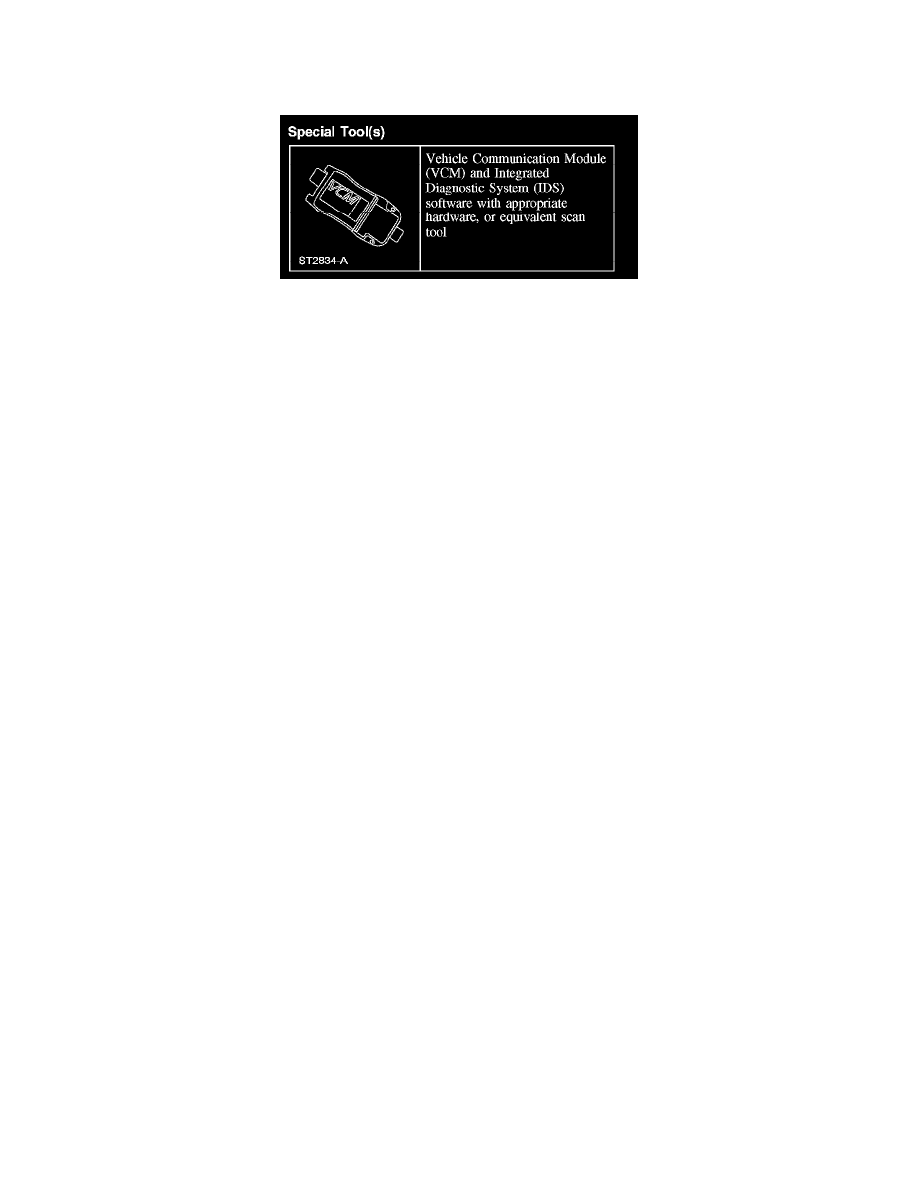Edge FWD V6-3.5L (2007)

Air Bag(s) Arming and Disarming: Service and Repair
Supplemental Restraint System (SRS) Deactivation and Reactivation
SUPPLEMENTAL RESTRAINT SYSTEM (SRS) DEACTIVATION AND REACTIVATION
Special Tool(s)
Special Tool(s)
Deactivation
WARNING:
-
Always wear safety glasses when repairing an air bag supplemental restraint system (SRS) vehicle and when handling an air bag module.
This will reduce the risk of serious personal injury in the event of an accidental deployment.
-
Carry a live air bag module with the air bag and trim cover pointed away from your body. This will reduce the risk of injury in the event
of an accidental deployment.
-
Do not set a live air bag module down with the trim cover face down. This will reduce the risk of serious personal injury in the event of an
accidental deployment.
-
After deployment, the air bag surface can contain deposits of sodium hydroxide, a product of the gas generant combustion that is
irritating to the skin. Wash your hands with soap and water afterwards. Failure to follow this instruction may result in serious personal
injury.
-
Never probe the connectors on the air bag module. Failure to follow this instruction may result in air bag deployment, which may result
in personal injury.
-
Never probe the connectors on the safety canopy module. Failure to follow this instruction may result in safety canopy deployment, which
may result in personal injury.
-
The safety belt pretensioners are pyrotechnic devices. Always wear safety glasses when repairing an air bag equipped vehicle and when
handling a safety belt buckle pretensioner or safety belt retractor pretensioner. Never probe a pretensioner electrical connector. Failure
to follow these instructions may result in pretensioner or air bag deployment which may result in serious personal injury.
-
To reduce the risk of personal injury, do not use any memory saver devices.
NOTE:
-
The air bag warning indicator illuminates when the restraints control module (RCM) fuse is removed and the ignition switch is ON. This is normal
operation and does not indicate a supplemental restraints system (SRS) fault.
-
The supplemental restraints system (SRS) must be fully operational and free of faults before releasing the vehicle to the customer.
All vehicles
1. Turn all vehicle accessories off.
2. Turn the ignition switch to OFF.
3. At the smart power distribution junction box (SPDJB), located in the LH lower kick panel, remove the lower kick panel fuse cover and the
restraints control module (RCM) fuse 46 (7.5A) from the SPDJB.
4. Turn the ignition ON and visually monitor the air bag warning indicator for at least 30 seconds. The air bag warning indicator will remain lit
continuously (no flashing) if the correct RCM fuse has been removed. If the air bag warning indicator does not remain lit continuously, remove the
correct RCM fuse before proceeding.
5. Turn the ignition OFF.
6. WARNING: To avoid accidental deployment and possible personal injury, the backup power supply must be depleted before repairing
or installing any new front or side air bag supplemental restraint system (SRS) components and before servicing, installing, adjusting or
striking components near the front or side air bag sensors, such as doors, instrument panel, console, door latches, strikers, seats and hood
latches.
The front impact severity sensors are located on the radiator support under the front bumper cover.
The first row side impact sensors are located at or near the base of the B-pillars.
The second row side impact sensors are located on the C-pillars.
